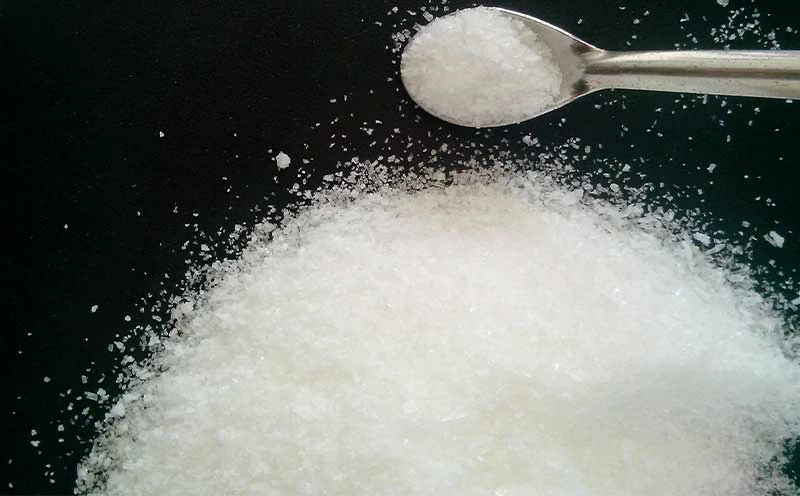Sodium chlorite (NaClO2) is a white powder that, when dissolved in water, forms a mild chlorine-scented solution. On its own, sodium chlorite isn't effective as a disinfectant. Instead, it serves as a precursor for generating chlorine dioxide (ClO2), a potent and highly effective disinfectant used in various industries for water treatment, food processing, and more.
In this blog, we will explore why sodium chlorite is converted into chlorine dioxide, the benefits of chlorine dioxide, and how the conversion process works.
Why not Sodium Chlorite Directly
While sodium chlorite does have some disinfecting properties, it is far less effective compared to chlorine dioxide. There are several reasons why chlorine dioxide is preferred:
1. Limited Effectiveness of Sodium Chlorite
Although sodium chlorite can kill certain microorganisms, its disinfecting properties are weaker compared to chlorine dioxide. Chlorine dioxide is far more efficient at eliminating a broader spectrum of microorganisms, including bacteria, viruses, and protozoa. This makes chlorine dioxide a superior choice for applications requiring high efficacy, such as water disinfection.
2. Stability Concerns
Sodium chlorite tends to degrade over time, especially in acidic conditions, reducing its effectiveness. In contrast, chlorine dioxide is more stable and does not break down as quickly, making it a more reliable choice for consistent disinfection over time.
3. Selectivity and Safety
One of the main benefits of chlorine dioxide over traditional chlorination methods is its selectivity. Chlorine dioxide is less likely to produce harmful chlorinated disinfection byproducts (DBPs), such as trihalomethanes (THMs), which can be harmful to human health. This selectivity makes chlorine dioxide the preferred disinfectant, particularly in drinking water treatment.
4. Ease of Use and On-Site Generation
The conversion of sodium chlorite to chlorine dioxide requires an acid activation step. This process is well-established and can be controlled to generate chlorine dioxide on-site as needed. On-site chlorine dioxide generators offer cost-effectiveness and flexibility, making them ideal for applications like swimming pools, water treatment plants, and food processing facilities.

Conversion Process:
To convert sodium chlorite to chlorine dioxide, an acidification reaction is used. There are two primary methods for activating the conversion: acid activation and chlorine activation.
1. Acid Activation: The Most Common Method
The most common method of generating chlorine dioxide from sodium chlorite involves acidifying the sodium chlorite solution with a weak acid, like citric acid or hydrochloric acid. This reaction produces chlorine dioxide gas on-site and is commonly used in water treatment and other applications.
NaClO2 + HCl → ClO2 + NaCl + H2O
2. Chlorine Activation: For Industrial Use
In some industrial applications, chlorine gas is used to activate sodium chlorite to produce chlorine dioxide. This method is typically used in large-scale disinfection processes for water treatment or other industrial disinfection needs.
NaClO2 + Cl2 → ClO2 + NaCl
Here, chlorine gas (Cl2) reacts with sodium chlorite (NaClO2) to generate chlorine dioxide (ClO2). This reaction is efficient for large-scale operations but requires careful handling due to the use of chlorine gas.
Why Is Chlorine Dioxide the Preferred Disinfectant?
High Efficacy: Chlorine dioxide is effective at killing bacteria, viruses, and protozoa, making it an essential tool in water purification and disinfection.
No Harmful Byproducts: Unlike chlorination, chlorine dioxide does not produce harmful byproducts like chlorinated DBPs, making it safer for human consumption and use.
Versatility: Chlorine dioxide is not only used for water treatment but also for bleaching, odor control, and food safety applications.
On-Site Generation: The ability to generate chlorine dioxide from sodium chlorite on-site provides flexibility and cost savings, particularly for businesses that need on-demand disinfecting solutions.
Applications of Chlorine Dioxide
The powerful disinfectant properties of chlorine dioxide make it useful across various industries:
Water Treatment: Used to purify drinking water, treat wastewater, and disinfect swimming pools.
Food Processing: Helps control bacteria and pathogens in food handling and processing environments.
Industrial Cleaning: Chlorine dioxide is used in cleaning and sanitizing in industrial applications, including cooling towers and HVAC systems.
Odor Control: Chlorine dioxide is effective at neutralizing unpleasant odors in industrial facilities and waste management.
Conclusion: Sodium Chlorite to Chlorine Dioxide Conversion
The conversion of sodium chlorite to chlorine dioxide harnesses the powerful disinfecting and odor control properties of chlorine dioxide. By acidifying sodium chlorite, we can generate chlorine dioxide on-site for use in various disinfection and water treatment applications. Whether it’s for drinking water, industrial cleaning, or food safety, chlorine dioxide offers a safer, more effective alternative to traditional disinfectants.
Understanding the sodium chlorite to chlorine dioxide reaction and how to generate chlorine dioxide effectively ensures that industries can apply this powerful disinfectant where it’s needed most.




